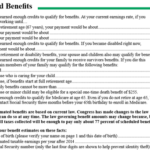 Medicare has a variety of premiums, deductibles and co-pays. You’re probably familiar with these terms as most traditional health insurance plans have them also. However Medicare has premiums, deductibles and co-pays for each part, making it difficult to figure out how much you will pay for medical care.
Medicare has a variety of premiums, deductibles and co-pays. You’re probably familiar with these terms as most traditional health insurance plans have them also. However Medicare has premiums, deductibles and co-pays for each part, making it difficult to figure out how much you will pay for medical care.
For example, if you fall and break your hip, the care you will need could fall under Part A (ambulance and care received while you are in the hospital), Part B (for doctor visits after you leave the hospital) and Part D (for prescriptions). Since each part of Medicare has it’s own costs, determining how much you could end up spending for that broken hip could require an advanced degree in mathematics!
To help you demystify the costs of Medicare here is a quick run-down of the various premiums, deductibles and co-pays under each part of Medicare.
Premiums: Most people do not have to pay a premium for Part A because they paid Medicare taxes during their working years. You do not have to pay a premium for Part A if:
- You are age 65 or older and you are already collecting Social Security
- You are age 65 or older and you are eligible for Social Security but you have not applied for benefits yet
- You are age 65 or older and you or your spouse paid in Medicare taxes through work
- You are under age 65, but you have received Social Security disability benefits for at least 24 months
- You are under age 65 and you have End-Stage Renal Disease
If you have to purchase Part A your premiums could be up to $441 per month in 2013. Also, if you choose to buy Part A, in most cases you will also have to purchase Part B as well.
In 2012 the premium for Part B was $99.90. In 2013, the premium increased $5.00 to $104.90 per month. Most people will pay this amount, but if your income is above a certain amount you could pay more.
Medicare looks at your modified adjusted gross income from your tax return from two years ago. If your MAGI is over $85,000 ($170,000 if you are married), then your premium could be higher. Premiums in 2013 range from $104.90 all the way up to $335.70 per month. If your income goes down you can appeal to Medicare to have your premium amount adjusted.
Also, don’t forget that if you don’t enroll in Part B when you first qualify you may have to pay a penalty. This penalty is a permanent increase in your monthly premium amount, so make sure you sign up when you are first eligible.
If you sign up for Part D (for prescription coverage) you will have an additional premium to pay. The cost depends on which plan you go with. And similar to Part B, you will pay a higher premium under Part D if your income is above a certain amount. Also similar to Part B, if you wait to enroll in Part D you could pay a penalty.
If you choose to go with a Medicare Advantage plan (Part C) instead of traditional Medicare, you will pay a separate premium in addition to your Part B premium. The premium will depend on which plan you choose and can range anywhere from $25 to over $200 per month.
Deductibles: In addition to premiums you will also pay annual deductibles for each part of Medicare. Deductibles represent the amount you pay before your Medicare or other insurance coverage kicks in. For example for Part B your deductible is $147, so you will need to pay $147 before Medicare will pay any of your doctor bills.
The deductible for Part A is $1,184 in 2013, and the deductible for Part D is $325. If you have Part D or a Medicare Advantage plan, your premium may be covered (at least partially) as part of the plan benefit.
Co-Pays: In addition to your premiums, and once your deductibles are met, you will generally have to pay a copay (also called co-insurance) for any additional services. Each part of Medicare has their own co-pays, so we’ll discuss each one separately.
Under Part A, if you are in the hospital for an extended time period, there is no co-pay until you have reached day 61 (you do have a deductible during that time period however). From day 61 through day 90, you will pay a co-pay of $296 per day. If your hospital stay extends beyond 90 days, then on day 91 your co-pay amount goes up to $592 per day. You have up to 60 days of coverage beyond 90 days (called lifetime reserve days); once you have used up all of your lifetime reserve days, you are responsible for 100% of the cost.
Under Part B, you will pay a 20 percent co-payment on any services received after you have met your deductible.
Part D and Medicare Advantage plans (Part C) have their own co-pays depending on which plan you choose.
It’s possible that a Medigap or Medicare Advantage plan will cover some of your co-pays or other costs under Parts A and B, so if you would like to simplify your costs a Medigap or Medicare Advantage plan might be a good choice for you.
As you can see there are many costs associated with Medicare so it’s important to be aware of the different costs and plans so you can choose the coverage that’s best for you. If you are already enrolled in a plan, make sure you are reading the materials provided each year. If you are not yet enrolled in Medicare, be sure to visit this site often, as well as Medicare.gov and the AARP website for information on Medicare plans.





Leave a Reply